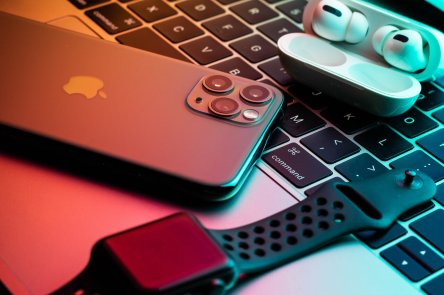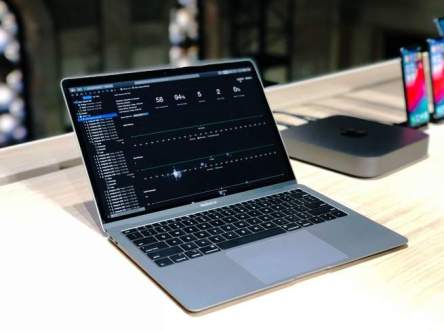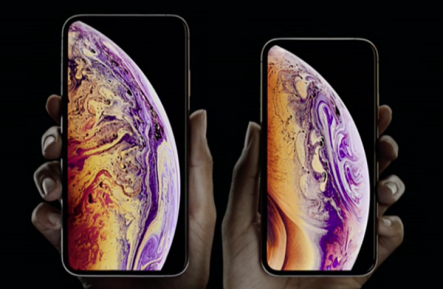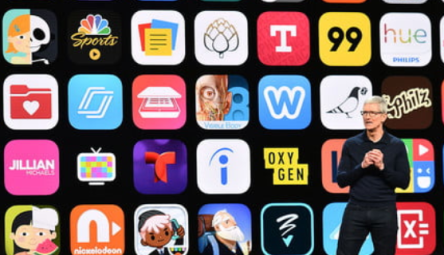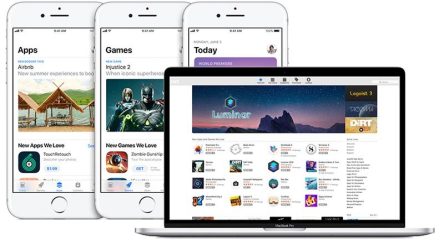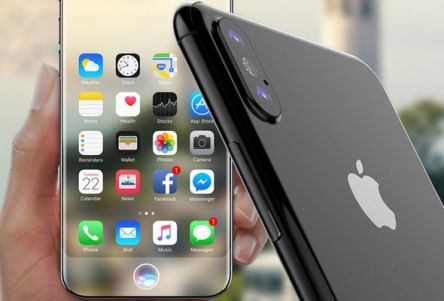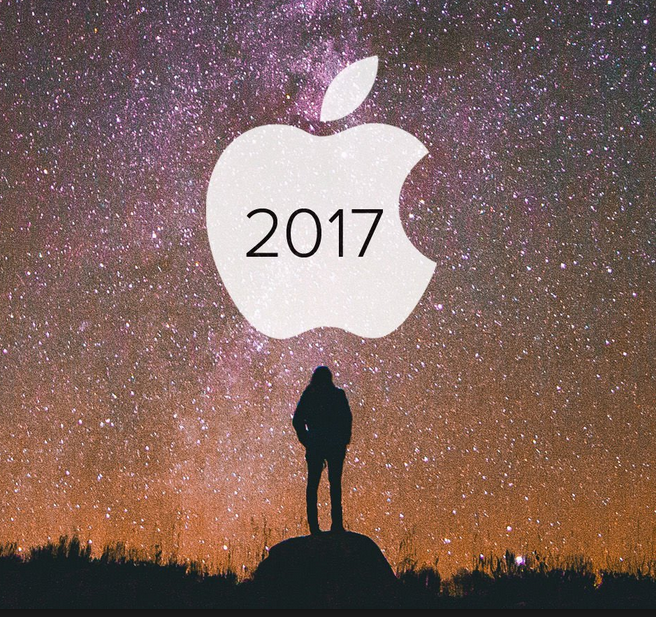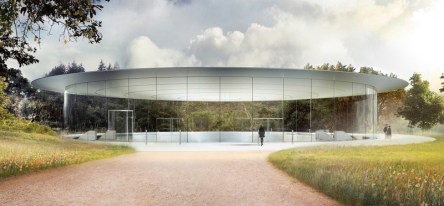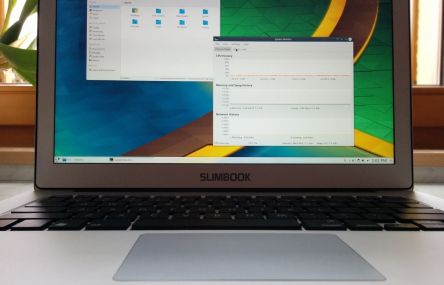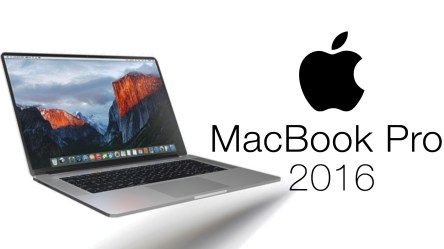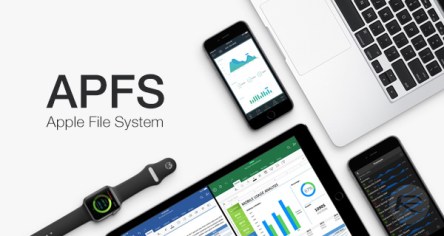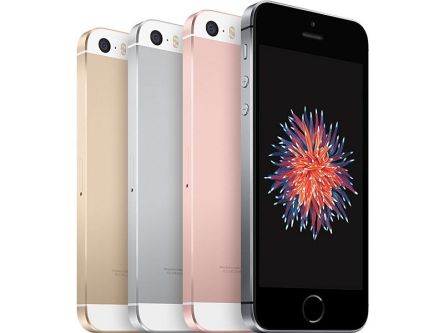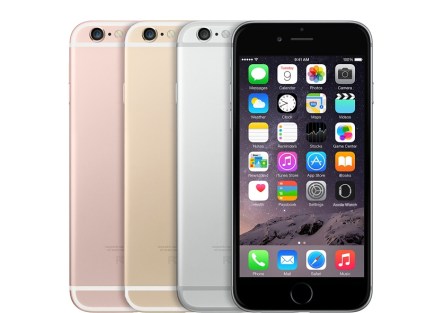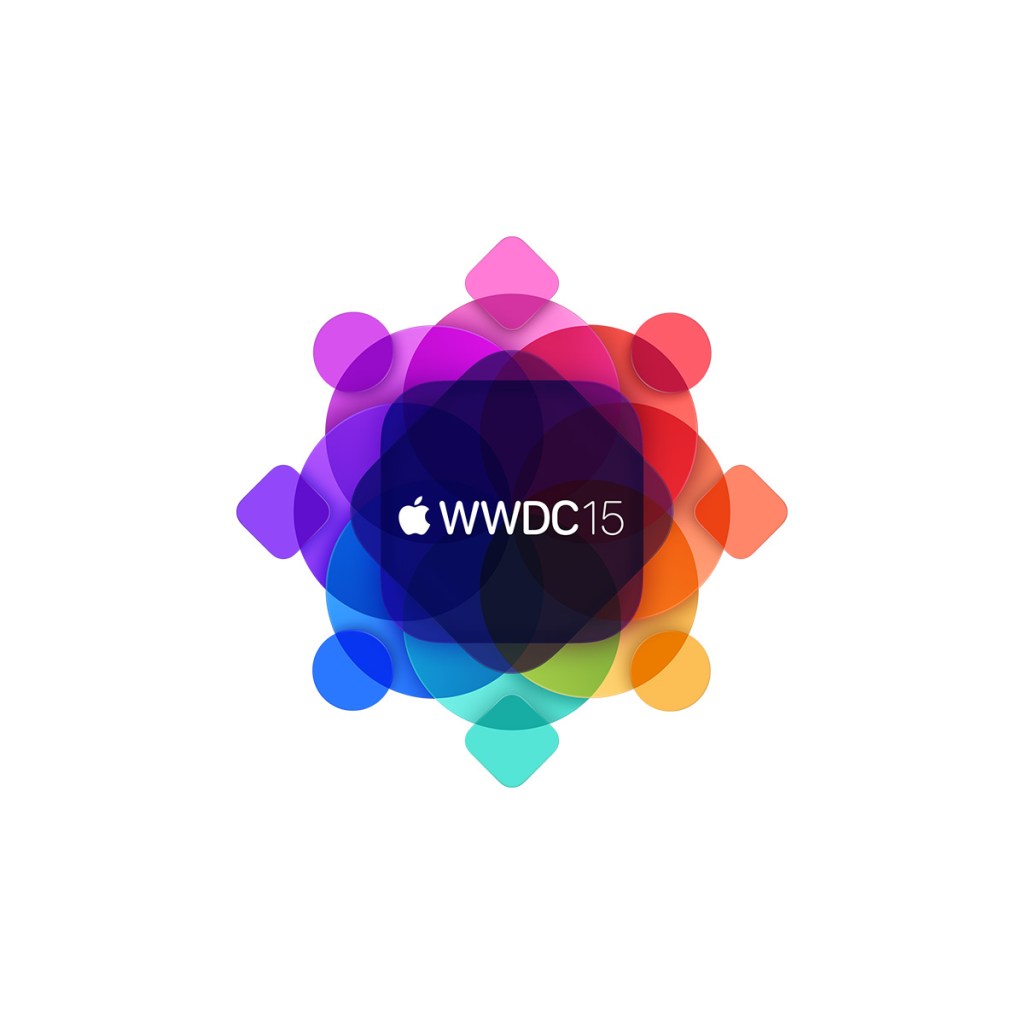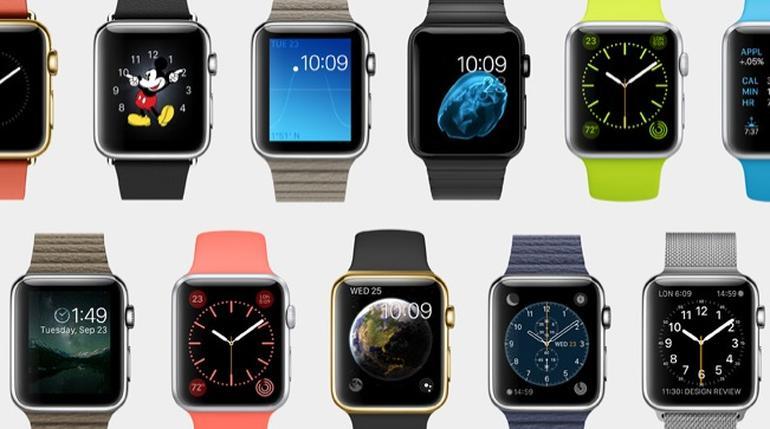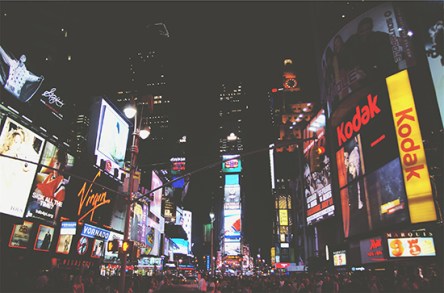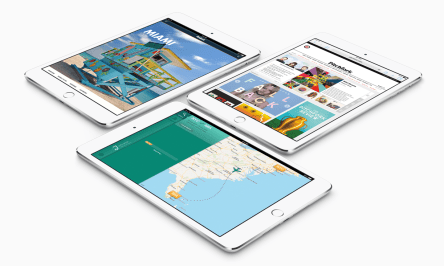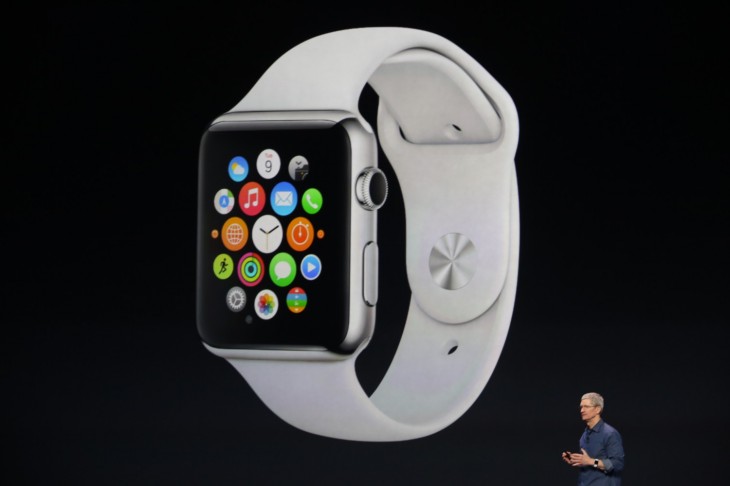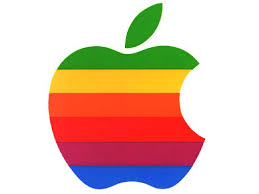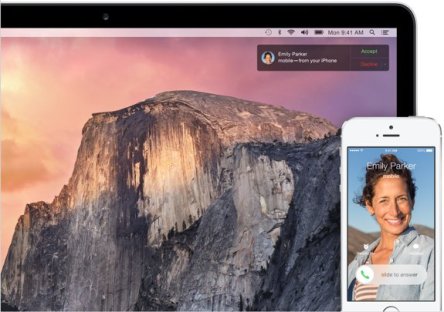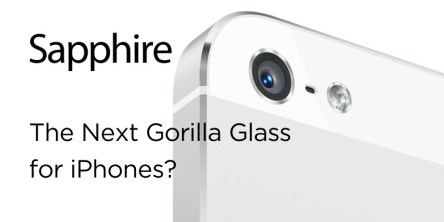Apple launched and revealed its latest products last week with its latest announcement of Apple Intelligence. Let’s explore these innovative products that keep us healthy, connected, productive and entertained. Apple Watch has a new design that is even more useful, essential and intelligent. Series 10 has the most advanced design and the biggest wearable display ever built. It has 30 percent more screen area than the Series 6. With increased font size and easy type messaging, its rounded corners are softer and sleeker with a wider display and 40 percent brighter when viewed from an angle. Apple Watch Ultra 2 has new aluminum finishes and comes in Jet Black—the first ever glossy black aluminum finish, along with rose gold and silver. It is more comfortable and is the thinnest/lightest Apple Watch ever at just 9.7mm. Nearly 10 percent thinner than Series 9. A new sleek speaker lets you play music directly when you don’t have AirPods handy. Polished grade 5 titanium replaces stainless steel, weighing 20 percent less than the stainless-steel Series 9. With custom Apple silicon, it is carbon neutral and energy efficient. For phone calls on series 10, the new neural network is used to suppress background noise to make it sound clear and crisp. AirPods According to Apple, Apple AirPods are the most popular and loved headphones in the world! They are magically easy to use, and the new generation of AirPods 4 has 3D photogrammetry and laser topography to build an unparalleled data set. AirPods 4 is the most comfortable yet. It has an H2 chip unlocking only what Apple silicon can deliver—the best-sounding AirPods ever, including hands-free personalized spatial audio. When interacting with Siri, you can shake your head yes or nod to say no. Voice isolation removes all...
iPad Update
Spring 2024 Edition
Apple gadgets and products have improved significantly since their launch. Now, they are more portable and powerful than ever. Let’s explore the latest Apple iPads, Magic Keyboard and Apple Pencil upgrades. The iPad’s versatility defines it. The new iPad allows users, from consumers to pros, to take their creations to new heights. It brings lessons and learning to life for teachers and students alike, as well as gaming and entertainment. Light as a feather, the newest iPad Air offers engaging content, gaming, high resolution and Apple silicon, making it versatile for so many. It is available in 11-inch and an all-new 13-inch since many prefer a significant 30% more screen real estate. The 13-inch allows for more participants on Zoom calls. The new camera has a front-facing camera in landscape view, making it perfect for taking notes on the magic keyboard or FaceTime calls. The sound quality of the iPad Air is immaculate, with double the bass. iPad Air includes an Apple silicon M2 powerful chip with a faster GPU, CPU and Neural engine, 50% faster than M1 and better memory with powerful AI and learning features. These improvements in performance and capabilities ensure that the iPad Air is a reliable and powerful tool for any task. iPad Air comes in two new colors, blue and purple, along with space gray and starlight and is designed with 100 percent recycled aluminum in the enclosure. iPad Air also works with the new Apple Pencil Pro to add more capabilities and bring ideas to life like never before. The starting price for the iPad Air is $599. Crush the limits with iPad Pro. The iPad Pro is now so thin and so powerful, with a breakthrough display and amazing pro apps. Available in 11inch, 5.3mm and...
Apple Announcements
October 2018 Edition
Hardware announcements from Apple late last month seem likely to satisfy some longtime wishes of Mac aficionados. The MacBook Air, the company’s “budget” line of laptops and its most loved Mac, has finally been fully redesigned and reengineered, adding hardware features that have become standard on MacBooks and MacBook Pros. It now sports a crisp 13.3-inch Retina Display (think 4 million pixels) that has 48 percent more color than the previous version, while the chunky aluminum bezels were replaced with some slim black lines that drop the size of the laptop by 17 percent. The Retina display gives the screen more than four times the resolution of the prior Air laptops and is more than visible as soon as you lift the lid. If you’re familiar with the 13-inch MacBook Pro, know they share the same resolution. The only thing missing is the True Tone display, present in the latest generation of Pro laptops. Connectivity-wise, the device has two Thunderbolt 3 ports (USB-C), unfortunately on the same side, and sadly no more MagSafe. The novelty is Touch ID, now part of the package with a keyboard-based sapphire fingerprint scanner, which can also be used with Apple Pay. There is one more thing the Air has—the 3.5mm jack port. The keyboard has Apple’s butterfly mechanism and a Force Touch trackpad that is 20 percent larger than the one on its predecessor. The speakers’ power got a 25 percent boost in volume and emits twice the bass. Video calls, dictation and Siri should also show improvement thanks to the three-microphone array. The new Air now has Siri onboard and, for the first time, it’s made of 35 percent post-consumer recycled plastic (for the speakers) and 100 percent recycled aluminum to help reduce the computer’s carbon footprint...
Autumn Crop
Apple's New Unveilings
At Apple’s September product unveiling, three new iPhones grabbed the spotlight. Tim Cook’s presentation also showcased the new Apple Watch, called “an intelligent guardian for your health.” To introduce the new Apple Watch to the world, Apple turned to American Heart Association president Ivor Benjamin, who applauded the company’s innovation and commitment towards health issues. The most prominent new feature of the Apple Watch Series 4 is that the device is now able to detect a low heart rate and atrial fibrillation. This advances its health detection capabilities far beyond simple exercise tracking. The watch is now able to measure the electrical activity of the heart, enabling the user to take an electrocardiogram simply by putting their finger on the digital crown. The feature, as well as irregular heart rate detection, has received FDA clearance. There is also a next-generation accelerometer gyroscope, which enables the device to detect a fall by the wearer —when a fall is detected, the watch will send an alert prompting you to call emergency services. If the device senses that the user is immobile for more than one minute, the call will be started automatically. This may be ideal for those aging but hip grandparents who don’t want to admit a life alert device might be a wise wearable. Design-wise, Apple Watch Series 4 flaunts a 30 percent larger display—which gives enough real estate for up to eight shortcuts for apps—as well as a thinner body, which make it less bulky on small wrists. The speakers are 50 percent louder and its new S4 chip will have the watch perform twice as fast. The battery life should last for 18 hours and outdoor workout time has increased to six hours. Pricing starts at $399 for the GPS model and...
Apple WWDC 2018
Software Steals the Show
This year’s Apple WWDC keynote, held at the San Jose McEnergy Convention Center in San Jose, was a big surprise for many, not for what it showcased, but for what it didn’t—hardware. Even though the event is clearly about software, Apple has gotten us used to announcements of future or refreshes of current products. But this year’s session was all about a large variety of enhancements to its iOS, tvOS, watchOS and MacOS platforms, designed to further optimize the overall Apple experience. News on hardware will reportedly be announced in September. iOS improvements include faster speeds and enhanced responsiveness for the iPhone. This even applies to the older versions, like the 6S, which the company claims will fire up 50 percent faster than previously with its camera will be ready to snap photos 70 percent faster than before. iOS 12 should work just fine on all devices capable of running iOS 11, including the little 5S. This was pleasant news for those hanging on to older phones. Maybe the nicest touch added to the operating system is Screen Time, which could help curb smartphone overuse. New usage reports will show how you’re wasting your time and, should you want to, you can set limits for those apps that eat up too much of your time. Grouped notifications are an attempt to cut distractions, and parents will be able to limit their child’s screen time. For many, this announcement was bizarre as it is unheard of to have a company use one of its biggest annual events to showcase ways to use its products less. But the reality is that Apple doesn’t make money from the time people spend on its devices, it just needs as many people as possible to buy those devices. If...
Apple’s Marzipan
A Dream Come True?
The iPhone is Apple’s most popular product, with superb design and flawless operating system. The Mac is a beautiful and powerful machine that turns working into fun. iPhones and Macs, as members of the same product family, communicate nicely through continuity module, but there’s one more thing that could make the experience even better. In fact, Apple users have been dreaming about this for a very long time. The unification of iOS and macOS becomes a dream as soon as one joins the ranks of Mac users. It’s sad to see how few apps made it to the Mac thus far. Since last December, rumor has it that Apple is almost ready to fulfill this desire. A Bloomberg report claims that Apple has an internal project, dubbed Marzipan, that seeks to make it possible for app developers to publish apps that will work on both the mobile iOS devices and on Mac computers. But here people have different opinions on how, if at all, this will roll out. Blurring the lines between iOS and macOS is anticipated to occur this year at the next major software kicks in. If Apple decides to stick to its usual release pattern, we’re looking at iOS 12 and macOS 10.14 (some say that Apple might even rename it all together and go with macOS 11 for such a big update). The update is anticipated to be launched at WWDC in June, following to launch to the public in September. Until then, we will stockpile our questions. The first set of questions that comes to mind has to do with the concepts of each OS: iOS doesn’t have a mouse cursor and runs only on touchscreen devices, while macOS has no support for touchscreen devices and needs a mouse...
Apple Update
Refinement, Not Revolution
Come autumn, the world stops to see the next Apple crop. In this case, we mean tech, not fruit! This year has been especially bountiful with the launch of an upgraded Apple Watch, new iPhones, the 10-year celebration of the iPhone and the first keynote to be hosted at the company’s spaceship headquarters in the Steve Jobs Theater. Apple Watch Series 3 Even though the star of the evening was the iPhone X, some other interesting stuff occurred on stage. For example, we met the Apple Watch Series 3, Apple’s newest wearable version, upgraded to LTE connectivity—basically, the watch now works as a standalone device, so you don’t have to keep it connected to your iPhone. If you already own an iPhone and don’t have a watch, this should be the next item in your Apple shopping bag. The gizmo will work with the same phone number that your iPhone has, synchronizing calls, iMessage and music automatically. It will use a separate connection when away from the phone, so you no longer have to carry both your watch and your iPhone next time you hop on your mountain bike or head out for a jog. Visually, not much has changed. The device itself is slightly thicker than the Series 2 model, but that’s to be expected considering the performance upgrades it has stored inside. The Watch Series 3 is decked out with some new band options too—the Sport Loop, designed for outdoor active situations, and Hermès leather straps. Technical specs of the new watch include a new dual-core processor with 70 percent better performance and a new W2 chip that boosts Bluetooth, wireless connectivity and power efficiency. The cellular antenna is the display itself, and there is a tiny electronic SIM card inside for...
Apple WWDC 17
The latest and greatest
This year’s Apple WWDC event, hosted by chief executives Craig Federighi, Phil Chiller and Tim Cook, included updates to the company’s iOS, tvOS, watchOS and macOS. There were also a range of hardware updates, including a new iPad Pro, updates to the entire Mac laptop line, a new iMac Pro and the new Siri-enabled speaker dubbed HomePod. iOS 11 The new version of the iPhone’s and iPad’s operating system, coming this fall, is packed with new possibilities, culminating with the usage of augmented reality in games and apps. The new OS will reveal a system-wide design revamp, tilting towards bolder fonts, borderless buttons, new animations and other small visual tweaks. The Control Center has been compressed to fit on one page, and aside from its new look, offers new customization options. The Lock Screen and Notification Center have been combined under one entity, thus pulling down access to Notification Center will also bring up the Lock Screen. The App Store has been redesigned for the first time. It now organizes and separates games and apps into their own sections, while offering a dynamic Today view, populated daily with the newest content. A much-awaited change is the new Files app. It mimics the Finder on macOS (no surprise there), including the drag and drop feature that allows to reorganize files, links and more between apps. There is also a difference: on the iPhone, drag and drop can be used within apps, while on the iPad it can be used across the entire OS. Then there’s the new Dock, Mac users are familiar with it, but for iPad users is a foundational change. Easy to customize with apps, the Dock changes as you work—the suggested apps, such as the recently opened apps and the last one...
Apple Park
Trendsetting Office Space
One of the world’s most impressive development projects is close to being finalized. The super-famous spaceship structure that’s to serve Apple’s needs in Cupertino, Calif., is a few months away from welcoming the first employees. The tech giant announced in a prepared statement that the campus, dubbed Apple Park, will be open to its people in April. Since the start of construction in December 2013, the project has been under close observation by fans and opponents alike, buzzed constantly by curious drones. The material they gathered didn’t disappoint, in fact, viewing any of the multitude of aerial videos, the astonishing attention to detail is crazy. It’s almost impossible not to let your mind drift towards the device that made Apple, Apple—the Mac. Apple Park is estimated to have a $5 billion price tag—a figure CEO Tim Cook didn’t dispute on a 2015 TV interview. The project was born out of Steve Jobs’ idea of developing a center for creativity and collaboration and features extraordinary structures throughout its 175 acres. Its ring-shaped main building totals 2.8 million square feet and is entirely covered in the world’s largest panels of curved glass. It will be surrounded by a lush canopy of over 9,000 native and drought-resistant trees, leaving almost no cement-laden from the campus Apple had acquired from HP. The 1,000-seat theater at Apple Park will be named the Steve Jobs Theater to honor his memory and the enormous impact he had on Apple and the world; the 20-foot-tall glass cylinder with 165 feet in diameter, covered by a metallic carbon-fiber roof, will be situated atop a hill, one of the highest points within Apple Park, overlooking meadows and the main building. “Steve’s vision for Apple stretched far beyond his time with us. He intended Apple...
KDE Slimbook
A Linux laptop
The world has three major personal computing platforms: Microsoft Windows, macOS and Linux kernel-based. Though there is no reliable way to know the exact usage share of each of these operating systems, there are estimates. A recent stack overflow web developer survey says that usage among English speakers is broken down as follows: Microsoft Windows – 52.02 percent; Apple macOS – 26.2 percent; Linux kernel based – 21.7 percent. Despite benefits as an independent, open-source platform, Linux is the orphan child. Unlike Apple, which is dedicated to making sure hardware and software work in sync, and unlike Windows’ licensing fees and requirements to ensure that hardware providers come up with proper drivers and support, Linux users can go through hoops to get running on different hardware. The usual method to get Linux on a computer typically involves digging for information on multiple forums, using how-to-guides and hoping that at least one other member of the community has experienced the issue that you’re facing. You’re probably familiar with this scenario: desktop Linux user buys a Windows laptop, wipes the hard drive and installs Linux on it. Afterwards, he realizes that he is on his own, with no support from the laptop manufacturer. That’s the life of a Linux user— solitary as a trade-off for safety. This segment of users has seen an ever-rising interest from manufacturers—Dell has been selling Ubuntu versions of their XPS laptops for a few years now, as has System76 and Lenovo. More recently, the KDE community in collaboration with Spanish laptop retailer Slimbook launched their very first KDE laptop. Their goal is not (just) to make a lot of money, but through its homogenized hardware to bring Linux to more users. KDE is an international team cooperating on development and distribution...
Apple Advances
Solar + AI
Tight-lipped Apple is finally opening up on its tech advancements and is turning heads: the company’s recent developments explore how a combination of solar energy and artificial intelligence can further reduce energy consumption. Solar Energy The California-based tech company has joined forces with utility provider NV Energy. Together, they will increase the solar power to Apple’s Reno data center by 200MW. In a press release, NV Energy president and CEO Paul Caudill stated, “We are proud to play a role in helping Apple meet their energy needs with Nevada’s abundant solar resource.” He continues, “In partnership with our customers, we continue to develop a more balanced fuel mix in a way that benefits the local economy by providing hundreds of jobs for Nevadans, particularly those in the International Brotherhood of Electrical Workers local 357 and 396, and advances the state’s policy goals.” Apple will dedicate 5MW of power towards their partner’s solar program for residences and businesses. “Our partnership with NV Energy helps assure our customers their iMessages, FaceTime video chats and Siri inquiries are powered by clean energy, and supports efforts to offer the choice of green energy to Nevada residents and businesses,” said Lisa Jackson, Apple’s vice president for environment, policy and social initiatives. She adds, “Investing in innovative clean energy sources is vital to Apple’s commitment to reaching, and maintaining, 100 percent renewable energy across all our operations.” Artificial Intelligence When it comes to AI, casual Apple users think of Siri, the (more-often-than-not) intelligent assistant. But Apple’s new approach to machine learning explores how AI can reduce energy usage in data centers Google was one of the earliest major tech companies to blaze the trail for energy-saving AI. As early as July 2016, Google announced that AI reduced data center energy...
New Look MacBook
Apple October Keynote
Apple’s October keynote was a relatively small event with low key news, but the new laptops announced were sufficient to keep the audience excited. New MacBook Pros are finally arriving, including one that’s thinner than the MacBook Air. It also boasts a new feature called the Touch Bar. The MacBook Pro, after 25 years on the market since the first PowerBook, has been slimmed down from the previous Retina MacBook Pro, the company cutting 14-17 percent of its thickness and almost a half-pound of its weight. It comes in 13-inch and 15-inch models, in silver or space gray colors. Specs-wise, the new machine is more powerful than ever before. The 15-inch Pro features a highly-capable Radeon Pro discrete GPU in every configuration, delivering up to 130 percent faster graphics performance than the previous generation. It feeds of a mighty 2.7GHz quad-core Intel Core i7 with 4GB of video memory and up to 16GB of RAM. It’s the first model that can be configured to 2TB SSD and is also the first time a MacBook Pro will not include standard USB ports, both sizes featuring just USB-C ports. This means that the MacBook Air is the only Apple laptop left with standard USB ports. It also means that the 4 Thunderbolt/USB-C ports will cause to people some consternation as the number of cables and accessories is going to skyrocket. However, Thunderbolt 3 combines ultra-high bandwidth with the versatility of the USB-C industry standard to bring one advanced port that integrates data transfer, charging and video output in just one connector able to deliver up to 40 Gbps of throughput. Dongles seem to be the future. The good news is that the headphone jack survived, but unfortunately and unexplainably, the MagSafe charging and the SD card...
Watch Works
Wearable for Seniors
With its user-friendly interface and advanced health and safety features, the Apple Watch Series 2 may be the perfect wearable for senior citizens. While wireless earbuds, dual cameras and the death of the audio jack dominated the post-game analysis of Apple’s 2016 Keynote, the Apple Watch updates demonstrate the genuine potential of today’s wearable technology, especially for senior citizens. While the first Apple Watch proved a bit of a disappointment, the Series 2 raises the bar with enhanced functionality and modern design. Combined with an updated watchOS and a slew of new apps, the Apple Watch Series 2 provides health and safety options perfectly attuned to the needs of today’s aging population. Safe and Sound The original Apple Watch arrived with plenty of choices for security-minded users. Over the last year, developers have been hard at work designing emergency alert apps. Dialing 911 during an emergency may seem relatively straightforward, but apps like HelpAround provide a sort of panic button that notifies authorities and a list of designated contacts when activated. Now the watch itself makes it even easier to reach out during a catastrophe. Pressing and holding the side button activates the watch’s SOS function, placing an immediate call to 911. The watch then automatically sends a message to designated contacts with location information and a map. After the call, the watch itself will display medical ID information, including age and allergies and other important information. The flashiest Apple Watch upgrades announced at the keynote include waterproofing and a new ceramic body almost impervious to the dents and scratches that plague most wearable devices. In terms of safety and security, but the device’s built-in GPS is what really shines. By incorporating the watchOS maps, the Series 2 can also display routes and maps...
Apple’s APFS System...
New File Features
It’s not easy to believe that tech-savvy Apple uses a file system that was developed more than 30 years ago. That’s right, 30 years ago, when floppy disks and spinning hard drives were considered cutting-edge technology. The good news is that this cycle is coming to an end. Apple announced that 2017 comes with the new Apple File System or APFS. What does it mean? The current file systems used by Apple are HFS & HFS+. These were never actually built for storage devices storing data measuring Gigabytes. HFS was introduced in 1985 when the Mac 512K (yes, that represents memory storage) was the company’s flagship. HFS+, shipped in 1998 on the G3 PowerMacs with 4GB hard drives, represented a serious iteration. However, since 1998, the typical storage capacity of a home computer has increased by a factor of over 1,000. Something needed to change. APFS has been developed from scratch to scale uniformity across all their devices. From the Apple Watch to the Mac, all Apple devices will use APFS as their default file system in the coming years. Encryption One of the most important and useful features is encryption. The new file system will offer three options for how to encrypt their data: Unencrypted—a user can choose to not encrypt their data at all. Of course, this is not at all advisable, especially if you have any sensitive data on your laptop; Single Key Encryption—has the exact same functionality as the FileVault does on a Mac at the moment. It will encrypt the data, requiring a key to access it. Multi-Key Encryption—is a thing of beauty. This feature will enable users to create multiple keys for different files, or even parts of files. In other words, your entire disk will be encrypted,...
iPhone SE
A little phone that can
Aside from the ongoing battle with the Department of Justice and its commitment to customer data privacy, Apple found one hour in March to introduce a few springy updates—a new iPhone, new iPad, news on the Apple Watch, Apple TV and CarPlay, and a new iOS version. The world today has smartphones that come in two sizes—big and huge. It is hard to turn to smaller devices after going big. Yet, the new iPhone SE seems to be the first one made for those with thumbs lacking the wingspan of albatrosses. As the company said, “this light and compact phone is designed to fit comfortably in your hand”. Steve Jobs’ words come to mind regarding phones and how they should match the ergonomics of your hand. In 2010, as competitors were selling larger devices, he mocked a big phone: “You can’t get your hand around it… No one’s going to buy that.” But in 2014 Apple changed its mind and released iPhones with 4.7 inches and 5.5 inches, up from 4 inches for older models such as the iPhone 5 and 5S. Yet more than 30 million consumers bought the older four-inch iPhones last year, according to the company. “Some people even pleaded with us to please keep the four-inch products,” said Greg Joswiak. Apple made now another U-turn with this new 4-inch phone (was Steve Jobs right after all?) The iPhone SE will be released on March 31. It has the style of iPhone 5S released in 2013 (adding the new rose gold color), but the inside hides most of the upgrades launched with the iPhone 6S released in 2015. Yes, only most of them. The iPhone SE comes equipped with the same powerful 64-bit A9 processor as the 6S, which makes it...
Apple’s Fall Crop
iPhone 6S, iPad Pro, TV and more
Apple’s annual fall product preview featured a colorful array of unprecedented announcements kept 6,000 in-person attendees and thousands more online viewers interested for more for almost two hours. “To wear it is to love it.” Everyone knew there would be a new pair of iPhones—the iPhone 6S and 6S Plus—but this is not how the evening started. First came the Apple Watch, now best buddy with high-end fashion house Hermès, in an entirely new collection that features hand-stitched leather straps and a special watch face. The couture device will have a selection of three bands with the stainless steel face: a single leather loop, a double loop, and a cuff. The double loop one comes only with the 38mm face, while the thicker cuff only has the 42mm version. The band leather is available in different colors. Apple also announced new gold and rose gold colors for the Apple Watch Sport, a take on the pricey Apple Watch Edition series, but in anodized aluminum. Moreover, an expanded range of pastel Sport Band colors were presented under the fall collection. This can only mean that more colors are in the works for next year. Starting September 16, the wearable software will be updated to Watch OS 2, providing support for native third-party apps named “third-party complications” that bring notification and other third-party app data on to watch faces, as well as some overall performance improvements. More on that when it’s out. “Thin. Light. Epic.” Then there was the iPad Pro. This (not so) little (anymore) device grew up into a fabulous 12.9-inch screen, with plenty of surprises. Very comfortable for gaming, entertainment, and serious work tool, the new iPad is accessorized with a full-size keyboard and a multi-tasking tool. And if you thought that MacBook...
WWDC 2015
Highlights from Apple
The 26th WWDC presented a new level of Apple software power, setting a high standard for hardware improvements that will be announced later this year. Attendees gathered from over 70 countries to celebrate the 100 billion Apple app download milestone (an impressive 850 apps are downloaded per second) and to assess future opportunities. The App Store currently holds 1.5 million apps, an exponential increase over the 500 apps in 2008, with over $30 billion paid out to developers so far. El Capitan is the new OS X, which summarizes what the update is all about. It’s named for the iconic rock tower and popular climbing destination inside Yosemite National Park. Unlike OS X Yosemite, which came with a series of big modifications for the operating system, the new upgrade is a relatively small upgrade. It focuses on three aspects for improved performance and user experience: Spotlight, Built-In App improvements, and Window Management. Spotlight now allows more extensive and integrated search capabilities such as looking up sporting event tickets, weather, and upcoming events using natural language; the search improvements extend to apps like Mail where queries like “Show me emails from Bill that I ignored” will work. Built-in Apps like Mail have swipe interaction enabled – swipe left on a message to delete it, swipe right to mark as unread. Moreover, Tabs are enabled in the Mail app and links and files can be added by simply dragging them in. Safari now allows to “pin” sites, so they’ll load instantly from the landing page. Furthermore, it lets mute audio tabs without entering the specific pages. With the new Window Management the user can automatically split the screen between apps and store multiple desktop layouts in a navigation bar on top. Performance-wise, El Capitan is presented...
Apple Springs Forward
2015 Product Previews
Clocks sprung forward announcing spring and so did Apple one week ago in San Francisco, where the latest devices and services were announced. Some of them were expected, having been announced in late 2014, some of them were surprises which kicked up international conversation. A brief review of the company’s numbers reminded the audience why Apple is one of the top companies of the world – 453 retail stores worldwide were visited by 120 million people during the last quarter alone. 700 million iPhones have been sold so far, making the iPhone the top selling device in the world. Apple TV, shy until now, seems to have found a way to outgrow the 25 million units sold so far. HBO Now will launch in early April at $14.99 per month with Apple as exclusive partner. For the event, Apple has lowered the price of its device from $99 to $69. Apple Pay has seen a positive trajectory, too. From the initial six banks that originally supported the initiative, it now has reached over 2,500 banks and won’t be stopping there. Tim Cook announced that soon vending machines will work with Apple Pay. CarPlay is also working its way up; over 40 models of cars will offer it by the end of this year. Perhaps even more interesting is the announcement that every “major” auto manufacturer has committed to using it. CarPlay’s mission is to increase safety while driving by making major phone features easier and safer to use, such as text-to-speech and voice recognition. Apple decided to step up and help health innovation with the new iOS software framework ResearchKit. It was built after close collaboration with 12 research institutions, among which are the University of Oxford and Stanford. This new app lets people volunteer to join medical research studies and also take tests to detect walking in line, vocal variations, or tapping in rhythm to test for Parkinson’s disease. Users decide how to share their data, and can decline to share it with Apple if they wish. ResearchKit will be open source, available next month, but with the first five tests built with it are already available. These help people participate in tests for Parkinson’s, diabetes, cardiovascular disease, asthma, and breast cancer. A new MacBook entered the scene; it completely stole the spotlight, thought to be reserved this spring for the Apple Watch. For many years now, Apple hasn’t made any changes in MacBook Air’s core design, the top of the line thin-and-light laptop. One port to connect them all The new 12-inch MacBook device is the result of a complete revamp that dumps virtually every conventional port – Thunderbolt, SD card slot, power connector – in favor of a pair: a single USB Type-C connection and an audio jack. The USB-C connector supports power, DisplayPort, VGA, data, and HDMI. Apple focused on wireless connectivity using Wi-Fi and Bluetooth; the company will sell VGA and HDMI adapters separately, meaning that only DisplayPort, charging, and USB 3.1 connectivity is supported natively through the single port. This advance helped turn the 12-inch MacBook into the slimmest, lightest MacBook ever; and a very silent one, too. The new MacBook doesn’t make a sound as it flaunts a fanless design, a feature that required a complete makeover. Under the hood it sports a new energy-efficient Core M Intel processor that sits in a logic board 67 percent smaller than Apple’s previous best. It runs at 1.1GHz that can Turbo Boost to 2.9GHz, consuming a mere 5 watts of power. Intel HD Graphics 5300, 8GB memory and 256GB SSD complete the logic board. The keyboard lies from edge-to-edge with closer together keys than its counterparts. The real novelty is in the engineering effort to create a new keyboard switch that replaces the scissor switches that power most laptop keyboards: the “Butterfly mechanism.” The new mechanism uses a single assembly with a stainless steel...
Marketing Magic
Best 2014 Campaigns
Congratulations: your attention span is now shorter than that of a goldfish…by one whole second. Recent studies show the average human attention span is now 8 seconds. That means social marketers and digital advertisers have to hook you with compelling content within moments. How much does that bait cost? Advertisers spent an estimated $8.5 billion on social ads alone in 2014, all to keep your brain entertained long enough to get to the punchline. And succeed they did. Our Social Media Team kept a keen eye out for those creative and unusual marketing campaigns with solid storytelling and strong social presence. Here are a few of our favorite digital campaigns from the last year. Mini Cooper Mini USA – Multiple Social Channels Mini Cooper has created a world of engagement, and it’s truly an experience all of its own. The iconic import has grasped attention and stolen the hearts of many motorists across the country, and to that end, they have established their own mini-nation: Mini USA. Beyond the exclusivity of an owner’s only club, the camaraderie and fellowship between Mini drivers curves closer to extended family. And what better way to spend time with your family than to be “couped” up with them on the greatest of American familial pastimes? “Mini Takes the States” is a clash of Mini Cooper clans cruising on a 5,000 mile road trip from [#MTTS]San Francisco to [#MTTS]Boston. Motorists can post to social networks during pit stops with a set of branded hashtags, photos and videos. Along with crossing the continental US, Mini’s social presence spans across platforms: Facebook, YouTube, Tumblr, Instagram and Twitter. Need some Mini maintenance? For continued care of your car, the company’s website features a downloadable PDF of your owner’s manuals, a roadside assistance...
New Apple Offerings
iMac, iPad 3 Mini, + more
The new holiday lineup from Apple has launched, and Tim Cook calls it “the strongest lineup of products that Apple has ever had.” Joining the iPhone line and the updated iOS are the new iPads, iMac, and OS X Yosemite. The iPad Air 2 is a 6.1mm thick tablet, down from the previous 7.5mm; this makes it noticeably thinner than the iPhone 6 which is 6.9mm thick. Design-wise, the tablet shares many of the iPhone 6’s features, with a few notable distinctions from the smartphone like the sharply angled chamfer where the screen meets the aluminum body outside the edge of the screen. Despite the ultra-thin profile, the iPad Air 2’s iSight camera sits flush against the body. The thinness of the device is achieved by laminating the different screen layers into one seamless panel. This process reduces glare and improves clarity. The resolution has not been increased, but the Retina display has been improved. An anti-reflective coating has been applied to the screen, reducing reflections by 56 percent. The device runs on an A8X chip and a GPU that Apple says is 180 times faster than the original iPad. It includes a new M8 motion co-processor that “tracks motion, calibrates sensors, and has a barometer,” said Apple. This is the first iPad with 2GB of RAM which not only will speed up overall performance, but will help with multitasking as well. The iPad Air 2 has a 10-hour battery life. New Wi-Fi 802.11ac MIMO and cell radios are in the iPad Air 2, increasing the speed performance. The home button now includes a Touch ID fingerprint scanner, which works just like those on the iPhones: unlock, complete app and in-app purchases, and works with Apple’s new Apple Pay to buy products in retailer...
Apple’s Autumn Crop
iPhone 6, Apple Pay, and Apple Watch
In the technology world, autumn brings with it a new line of Apple devices. From the stage of the Flint Center in Cupertino earlier this week, the launch location of Macintosh and iMac, Tim Cook announced the arrival of the new generation of iPhones and the debut of the company’s much-anticipated first wearable, the Apple Watch. Continuing last year’s trend, the company introduced two models of iPhones: the 4.7-inch iPhone 6 and the 5.5-inch iPhone 6 Plus. Their enlarged sizes flaunt curved edges with a thinner figure of 6.8 mm and 7.1 mm, respectively (the iPhone 5S is 7.6 mm thick). The curved glass screen melds smoothly into the aluminum body, and the power button has been moved on the right side of the device for easier one-hand use. With the ability of one-hand use in mind, Apple included a new smart feature called Reachability that minimizes the display, bringing the items from the top of the screen to the bottom of it, in order to reach all of the onscreen by double pressing on the home button. Furthermore, the landscape mode has been intelligently modified into a two-pane display, following the design used on Macs. For instance, when viewing iMessages or email, the left side shows a list view of the messages/emails, while the right side shows the contents of the message/email. The homescreen will also work on the horizontal position. Both phones come with Retina HD Displays that show off 1334 x 750 (326ppi) and 1920 x 1080 (401ppi) respectively. The expected sapphire display cover wasn’t used on the iPhone, but an ion-strengthened glass with an improved polarizer meant for better outdoor viewing. Focused and Fast The rear camera is still at 8-megapixel f/2.2, but adding some new features announce a vastly improved picture quality. One of these features is the Focus Pixel, designed to speed up autofocus, while auto image stabilization will take care of motion blur and hand shakiness. The face detection capabilities have been improved, the exposure is more controllable, and the Panorama feature now supports high-resolution photos of up to 43 megapixels. Video can capture 1080 HD at 60fps, while iOS8 has introduced a new 240fps slo-mo mode and time-lapse video. The front camera has been improved to FaceTime HD with a new sensor and an f/2.2 aperture, capturing 81 percent more light, thus taking better photos in low-light. Between the aluminum and ion-strengthened glass purrs the second generation 64-bit A8 processor; smaller than the A7 in the iPhone 5S, is able to deliver 25 percent faster CPU performance while being 50 percent more energy efficient. The new M8 coprocessor measures data from the accelerometer, compass, and gyroscope, and introduced the barometer that measures elevation, in addition to steps taken and distance traveled. The two chips and the Apple gaming technology, Metal, support developers in creating console-like games on the smartphone. Connectivity was improved to offer faster LTE reaching up to 150 Mbps. The new iPhones include support for Voice over LTE (VoLTE) which translates to higher-quality phone calls over LTE and, for the first time, through VoLTE, users on CDMA networks like Verizon will be able to use voice and data simultaneously. Wi-Fi 802.11ac is three times faster than its predecessor, and the iPhone 6 supports calls over Wi-Fi, a solution to the situation where a cellular connection is lacking. Can Apple Pay make credit cards passé? Touch ID is present on both devices and is an integral part of Apple’s new Apple Pay mobile payments initiative using its Near Field Communication (NFC) antenna. The three terms used to describe the service are Easy, Secure, and Private. It’s easy because with just a fingerprint, Apple Pay allows users to pay at already thousands of retail stores, by simply waving the newer iPhone or Apple Watch in front of a reader. For security, the owner’s thumbprint scan on the smartphone is required before...
iOS for Enterprise
Apple & IBM Partnership
Apple and IBM share a past, and recently announced plans to share a future, as both look to continue growth in their respective market niche. The news brought back memories from 30 years ago, when a partnership between the two companies was unimaginable. The goal of the partnership, according to an Apple press release, is to “redefine the way work will get done, address key industry mobility challenges and spark true mobile-led business change.” The move acknowledges the unique strengths of each company – IBM will contribute its big data and analytics expertise and Apple will offer the “elegant user experience of iPhone and iPad.” The enterprise market is not untouched territory for Apple, as plenty of Fortune 500 businesses have already deployed iOS devices. The current corporate customer list includes NASA, Nestle, Deutsche Bank, American Airlines, Cisco Systems, Johnson Controls, Luxottica, and GE. The BYOD trend (bring your own device) in the workplace has been beneficial to Apple as companies have gradually allowed employees to use their personal devices for work email and to access needed data. IDC research firm shows that iPhones accounted for 82 percent of smartphones in use at U.S. corporations and 36 percent globally, while iPads accounted for 73 percent of tablets in the U.S. corporate environment and 39 percent around the world. A new category of mobile apps will become available, debuting in 2015, announced the two companies. These will be tailored to meet the needs of specific industries like “retail, healthcare, banking, travel, telecommunications, and insurance.” IBM’s cloud infrastructure will be heavily used in correlation with Apple’s iCloud service. AppleCare for Enterprise will be added to the customer service domain, providing IT departments and users 24/7 support. “We’re good at building a simple experience and in building devices,” Tim...
Apple Pushes Continuity...
WWDC 2014 Report
SAN FRANCISCO – The 2014 Apple keynote, delivered here earlier this month, revealed some incredible updates for iOS and OS X, due this fall when the accompanying hardware will be unveiled. The main theme this year is Continuity, which urges users to imagine how much better their digital life would be if the phone, tablet, and laptop all had the Apple logo. It’s now true that a superior operating system for laptop or smartphone performance is no longer sufficient. Apple is pushing the advantages of adopting a cohesive family of devices, hoping that current Apple users have no need to jump ship, and new converts are tempted to completely embrace the Apple culture. Why sell one device when you can sell two or three? With continuity, the user can seamlessly start a task on one of the Apple devices (the iPhone, for example) and pick right where he/she left off to finish it on another device (the Mac), simply by clicking an icon that automatically appears. An iPhone owner with a Windows PC or a Mac owner with an Android phone won’t be able to do this. OS X Yosemite & iOS 8 Since Continuity is the link between the two OSs, the majority of the updates apply to both. Actually, the latest version of OS X is reminiscent of last year’s iOS due to the attention spent on design. Flat design, translucent panels, no gradients, and textures of iOS 7 could be spotted throughout the new OS; app icons have flatter designs, the dock and windows have sharper corners, and a new system font was created for an improved readability. A “dark mode” that dims the entire interface was added to help focusing better while working – “clarity, but also utility”, as Senior...
Sapphire Glass
Powered by the sun
Apple’s highly-anticipated sapphire glass will not only offer super-protection to our favorite electronic devices, but will also improve battery life by the addition of solar-powered charging cells. Sapphire is one of the three gem-varieties of corundum, the other two being ruby – corundum in a shade of red – and padparadscha – a pinkish-orange. Although blue is the most common color, corundum can also be colorless or pink, green, and shades of gray and black. It can be mined or artificially produced. Sapphire is more than a beautiful and extremely expensive gem. Because of its remarkable hardness – 9 on the Mohs scale, right after the diamond which scores the maximum 10 – sapphires are used in non-ornamental tasks such as infrared optical components (red ruby sapphires are utilized to create new-infrared lasers due to their capacity to be turned to the appropriate wavelengths, because of the titanium and chromium impurities that form them), high durability windows for high pressure diagnostic and scientific equipment, including bullet proof glass, wristwatch crystals and movement bearings, and scratch-resistant coverings for lenses and high-end watch faces (Rolex, Citizen, etc.) It is important to note that Corning Gorilla Glass scores ~7 on the Mohs scale. Very high-end smartphones are already using sapphire crystal screens. The handmade Vertu Ti has a 3.7-inch crystal-covered screen, but thus far the technology has been too expensive for mass produced smartphone screens. Apple started using it to protect the cameras on the iPhone and, more recently, on the home button for the 5S model. But things are not about to stop here. In a post on the Seeking Alpha investor blog, Matt Margolis concludes that the $578m deal Apple struck with GT Advanced Technologies has more than just the sapphire glass growth initiative behind...
Windows and OS X
8.1 vs. Mavericks showdown
I split my days between Windows and OS X. Sometimes I feel like a child whose parents got divorced and I have the responsibility of pleasing them both. At the same time I am the child who’s pampered by the parents who try to make up for their separation. For the tech lover in me, this situation is ideal: I don’t get bored and still manage to discover new features in both OS’, especially with the fierce competition between Microsoft and Apple. The general philosophy is clearly consistence across operating systems. Microsoft does it by offering the same OS on desktop PCs and mobile devices, while Apple’s strategy is the cohabitation of two operating systems (iOS and OS X) that share gestures and some UI consistencies so that it results in a consistent experience for the customer. After last year’s not very successful attempt of re-imagining the look and feel of Windows by adding the “touch”, but overlooking the responsiveness between devices (desktop, phone, tablet), Microsoft released the Windows 8.1 version through which it tries to calm down some of the critics. It reintroduced the Start button and included the ability to skip the Start screen and boot directly to the desktop; the colorful tiled look of the screen is ideal for tablets, but traditionalists wanted the classic desktop interface. Windows 8 is Microsoft’s attempt to create an OS that is as operational on traditional PCs and on mobile touch-screens. The idea behind the development of the dual interface is for Microsoft to gain market share in tablets while preserving Windows’ longtime dominance of the desktop-PC arena. However, despite the aggressive marketing campaign, the software gained just 8.02 percent of the worldwide market, much behind Windows XP at 31.42 percent and Windows 7 at 46.39...

